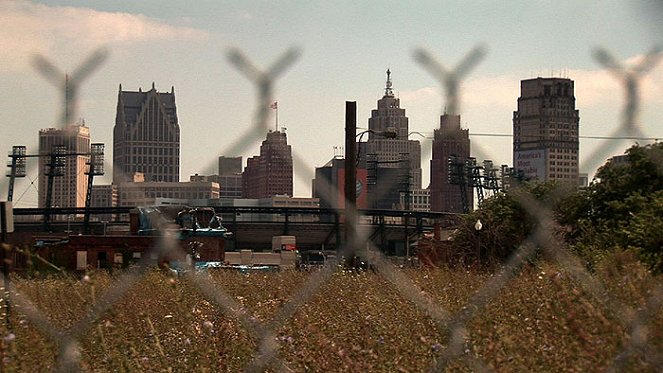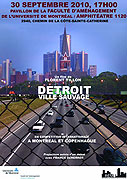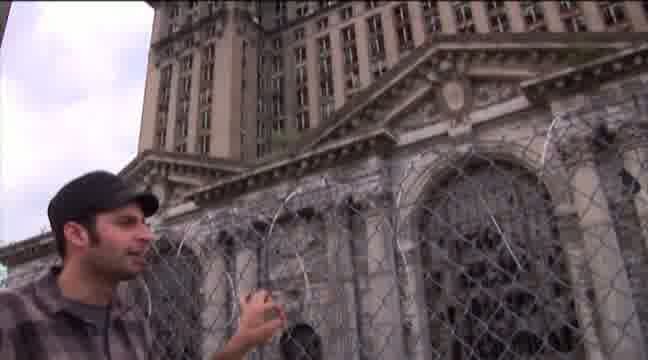Résumés(1)
It’s a wonder that more post-apocalyptic films like Mad Max aren’t shot in Detroit – derelict houses lining empty streets in the centre of town, abandoned by more than half the population, where you’re more likely to come across pitbulls than cars – it’s simply the perfect location. Yet in the past Detroit was a highly productive bastion of American industry and people certainly didn’t have anything to complain about, as we’ll see from the archive footage in this spellbinding documentary by French director Florent Tillon. The guides on this hypnotic journey through contemporary Detroit are people from all walks of life – a local philosopher, pianist, stray dog catcher, and even a guy who can fix practically anything. The polished visual compositions from this “ghost town,” together with the subtle soundtrack and intriguing characters, make for a truly unique picture. (Karlovy Vary International Film Festival)
(plus)Vidéo (1)
Critiques (2)
Le document reflète fidèlement l'atmosphère de Detroit et la vie qu'on y mène, mais il omet les informations les plus importantes - qu'elles proviennent de l'histoire ou du présent (et une comparaison basée sur les faits). On dirait que les créateurs ne veulent pas aborder les causes du déclin de cette ville industrielle autrefois importante, ils les réduisent à une simple phrase : "Et puis sont venues les drogues..." Les dialogues avec certains habitants des banlieues sont justes, intéressants et amusants (le meilleur étant le vieil homme qui cultive des légumes dans son jardin), tandis que certaines scènes sont complètement inutiles. Le fait que le nombre d'habitants blancs a diminué de 93% au cours des 50 dernières années et que le nombre d'habitants noirs a augmenté de 160%, et que ces drogues qui ont englouti la ville n'ont pas été introduites par des blancs, n'est pas du tout mentionné dans le document. Même la couleur de peau de ses protagonistes est mélangée de manière égale devant la caméra. Un documentaire, surtout s'il est destiné aux festivals, est le dernier média qui devrait dissimuler la vérité uniquement pour une "correction politique".
()
A lyrical memento of what happens when the social structure collapses. The post-apocalyptic atmosphere, but also the model stratification of the city into "closed communities" - one of the symptoms of the influence of corporate capitalism on the coherence of society. However, Tillon's film does not deal with context (instead only suggesting it), and he is more interested in capturing a city in decay and partial attempts at regeneration (clinging to the Christian-motivated "self-help", the pre-industrial community of growers). But as one of the speakers, the "grim philosopher" notes that they are more concerned with an alternative search for the city than the city itself. It is too bad that the director was not let in to the "white-collar" ghetto near the Renaissance Center, so one cannot enjoy the "city of zombies" from the other side of the barricade. But visually and aurally, this is a great project, tempting to different interpretations - Tillon was obviously interested in this, so I consider the information vagueness as more of an advantage.
()
Photos (1)
Photo © MFF Karlovy Vary 2011



Annonces